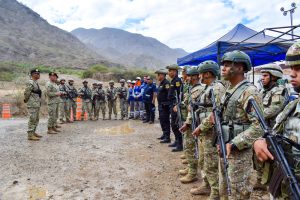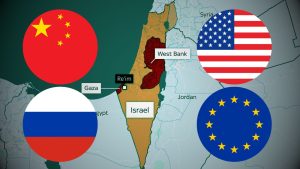Summary
In this article, the author describes the process of population resettlement in the city of Morococha, in the province of Yauli – Junín, and analyzes the problems involved in moving the inhabitants to a new city, taking into account the social, economic and community dimensions. Likewise, the potential improvement of the population’s living conditions is analyzed, as well as the creation of a sense of belonging in a new area. All this, within the framework of disaster risk management, and under the support of the corrective management process carried out by the National Center for the Estimation, Prevention and Reduction of Disaster Risk (CENEPRED).
The article concludes with a balance of the successes and mistakes made in the resettlement process, both by the residents and by the mining company, eight years after it began.
Key words
Population resettlement – corrective management – community dimension
Analysis
At 4600 meters above sea level, in the Morococha district, Yauli province, Junín region, the Toromocho Project of Minera Chinalco Peru, a subsidiary of Aluminum Corporation of China, is being developed. Morococha, throughout its history, has always been surrounded by mining exploration and exploitation projects, which gradually turned this city into one of the most important mining districts in the country. Currently, Toromocho is a world-class deposit, with large reserves of copper and molybdenum, as well as the capacity to process up to 117,200 tons of mineral per day. It consist of an open-pit mine with an approximate reserve of 1,526 million tons of mineral to be extracted and processed in a period of 36 years.
Since 2006, the Toromocho Project area includes the urban area of the city of Morococha (approximately 5,000 inhabitants). The process of citizen participation in public hearings began, with the purpose of relocating the inhabitants to an area suitable, outside the scope of any infrastructure of the Mining Project. It is in this context that, since 2009, the company Social Capital Group (SCG) has led the resettlement process of the city of Morococha, as part of the development and commissioning of the Toromocho mine.
Changes in the mining industry in Peru have renewed interest in the way in which the company and the State have carried out one of the largest resettlement processes in recent history. In this regard, it should be noted that the resettlement process was plagued by disagreements between both parties. Half of the residents were reluctant to leave their homes, claiming a sense of belonging, cultural bond and roots with Morococha. For this reason, the social impact study and the action plan for the resettlement of the population by the mining company were prepared and implemented. It was through a participatory process that involved the population in defining the new site, identifying beneficiary families, the housing model, the location of families and commercial premises in the neighborhoods of the new city.(1)
This new town, called Carhuacoto, is located 10 km from the city of Morococha and has infrastructure with a complete and comprehensive urban design, with houses of between 40 and 52 square meters. The new homes have water, sewage, and electricity services and Internet. The town has schools, a medical center, sports facilities and a memory museum called “Ojos de Morococha.” The museum is a way for the town to leave its past in images, as well as to maintain the information and memory of the ancient city, through of photography. (2)
According to the project’s environmental impact study (Knight Piésold, 2009), resettlement was an extremely necessary process. It not only makes way for the Toromocho project, but also safeguards the health and safety of the inhabitants of the Morococha district. Despite all of this, many families refused to move, stating that the new city did not have the necessary security conditions in terms of natural hazards such as soil erosion, floods and earthquakes.
Disaster risk management is a transversal and integral factor in all its facets and levels. (3) Therefore, a detailed study was carried out under the leadership of CENEPRED, as the technical-scientific authority, along with the Geological, Mining and Metallurgical Institute (INGEMMET) and National Institute of Civil Defense (INDECI). In the final report, it was determined that the occurrence of soil erosion was unlikely, and that the floodable area was modeled in 2009 with a frequency period of 500 years. The homes met the earthquake-resistant conditions established in the national regulations of buildings. (4)
In this sense, the company responsible for the relocation had taken the necessary preventive measures. It is evident that the resettlement area called “Carhuacoto” meets the conditions and provides the required security for its residents.
On the other hand, it should be noted that the activities programmed for the Toromocho mining exploitation project should proceed due to the importance of this project for local and national economic development. It is necessary to create conditions of security and stability, while avoiding the generation of social conflicts in the area. In any population resettlement process, a series of factors must be taken into account and the implications that are created for its inhabitants.
Regarding the economic consequences, there is a lack of work in both cities because the company only provides temporary or rotating jobs. Additionally, the residents, dedicated to commerce and transportation, recognize the lack of buyers in the new location. Many of them are being forced to close their businesses and choose to rent or sell their homes. Unlike traditional mining, which generated ties between workers, companies and the community, currently workers no longer establish strong relationships with mining companies. This largely due to new contract modalities such as the location of services that, by their nature, does not generate a labor link.
Regarding the social dimension, the residents feel that a forced resettlement was carried out, with an inadequate consultation process, because there was no consensus on the part of the entire population. They also perceive that there was an abuse in the agreements signed, such as, for example, in the price per square meter (nine dollars) that the company paid to the homeowners in Morococha. This led to a growing discontent and discomfort among residents.
Regarding the community impact, the perception is of uprooting due to the extinction of Morococha, altering the residents’ sense of belonging. For social specialists, the dividing of the settlers, along with their social fabric and the cultural and identity pattern appears to have been broken. The “eyes of Morococha” Museum was implemented and a participatory process was carried out for the photographic record of the daily life of local families. Although the children and young people from the city have participated (who received workshops by psychologists social, photographers and audiovisual artists), the museum has become a multipurpose room, losing the meaning for which it was created. Sometimes it has even been used as temporary housing, using tents and sleeping bags, due to the precarious economic situation of some residents.
Conclusions
Eight years after the start of the population resettlement, the result has not been as expected for the residents, since economic income, sources of work and the movement of capital have all been reduced. Added to this is unemployment and underemployment, which increased significantly thereby, reducing development prospects. Although they value the improvement of the dwellings, the conditions of the basic domestic services and of the public services, the new situation is unfavorable, especially compared to the economic factor.
It is important to understand that extractive activity generates conflicts, especially in a complex nation such as Peru, with marked inequalities. Addressing this situation represents a complicated task for all the actors involved (companies, the State, and communities), so that only with a comprehensive vision of the problem and not simply physical infrastructure can resolve this disagreement.
Finally, it is necessary to influence the improvement of the relationship between the company and the inhabitants. It can be done through a follow-up, monitoring and post-resettlement accompaniment process. This can turn the existing problem into a development possibility for the inhabitants of the new Carhuacoto.
References
- (july 17, 2020) Interview with Ms. Liseth Meza, Head of Community Relations of Minera Chinalco
- Cuarto Poder (december 12, 2018) Journalistic Report
- Allan Lavell, On Risk Management: Notes Toward a Definition (2001)
- Gestión Correctiva del riesgo, Informe Técnico N°028SGI en el distrito de Morococha, provincia de Yauli – región Junín.






